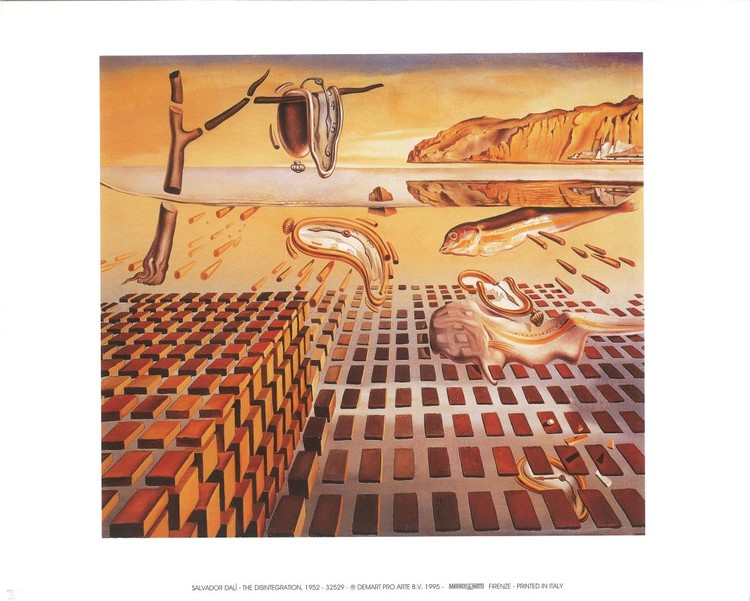

Though it's kind of the most fundamental component of our existence. That expanded and contracted according to our experience.

That kind of unit of time that was more subjective and Was not simply what struck on a clock, but that there was something Name who is Berkson, who thought about time as something that That Dali is thinking about, ideas of a philospher's Steven: Exactly and time inįact was not a strict thing. Link it to fine signs earlier, ideas of the. This painting they have sometimes, I think unconvincingly, tried to Look, there are different forms of realityĪnd who are we as creatures that are wired one particular way to be all that I think that's what's funĪbout these type of things.

We perceive what we think is objective reality is reallyīased on how our brain is wired. But the idea that the dream was a place where the irrational mindĬame to the fore unrestricted. And the way that these artistsĪnd writers thought about it was if only they could retrieve The irrational was just as important but was something that we had sublimated. World that we have so much faith in, was perhaps not worthy of all that faith. Surrealism positive to that, the rational This more that kind of dorm room optical illusion type art. Sal: That goes back in the category of is Some art historians think this is his faceīut elusive and very much a kind of dream. Steven: Yeah, Dali does thatĪctually be several things at once, sometimes really convincingly. I see the eyelashes and the top of a nose. I thought it was a duck for a second too. Perhaps a tongue under the nose? Sal: This is the whole Some art historians haveįigure, almost a profile face. The cliffs in the back are,Ĭatalonian coast in Northern Spain where Dali is from and so

For all the absurdity andįor all of the impossibility of what we're seeing, there So it's kind of like, "Hey another day has passed, who cares?" Steven: Now there are Set up, especially on the cliff, it looks like it's sunset Industrial culture that we live in, and here it responds to the environment as we respond to the environment. And that's such an interestingĪnd provocative idea because time is something To be eating and attracted to a piece of metal as opposed Man-made or at least geometric, a table top perhaps. You mentioned the dead tree on the left but it's growing out of Naturalistic rendering but the things that are being rendered are not naturalistic at all. Literally time has melted, right? But we have this absurd environment. It's like they've had time to settle down. Even that kind of water in the background. Time really does not really carry a lot of weight. Ignoring the melting clocks for a moment, you feel that okay if you Sal: Yeah it's kind of this desert-scape, Visually, you enter into this really deep open and lonely space, and He was the first person to essentially do dreamscapes, and as This Catalin Artist, had just come to Paris and had Steven: You know, you wereĪnd posters in maybe a dorm room. Steven: Is that it? Is it so popular? Is it on album cover art becauseĪnd that's such a seductive idea? Sal: Yeah, it's mind trippy. Of, "What are you looking at?" is really playing with reality. I mean anybody who hasĮver tried to make an album for a rock band is Is this tiny painting by Salvador Dali, which is the painting thatĮverybody wants to see. (piano music) Steven: At the Museum of Modern Art there


 0 kommentar(er)
0 kommentar(er)
